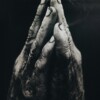
Space, Time and Presence in the Icon: Seeing the World with the Eyes of God
A significant disadvantage attending the hyper-specialized, professionalized nature of so much academic production today is the absence of synthesis. Scholars in diverse fields often treat similar issues (concerning things like identity, society, and the nature of truth)—but from different vantage points and with different vocabularies. They seldom see that they are duplicating each other’s efforts, or that they could be joining forces to draw more profound conclusions. Much academic art-historical work today, for example, is born in the parochial world of art-academia and dies there. (How many people have heard, for example, of T. J. Clark’s Absolute Bourgeois?) It emerges into the wider world only when novelists or filmmakers manage to link it with domestic dramas or fanciful conspiracies.
Clemena Antonova’s study, Space, Time and Presence in the Icon, is eminently “professional,” based as it is on a doctoral dissertation completed at Oxford University. In fact, its often technical vocabulary may be off-putting to the casual reader, and its tentativeness may discourage all but the most invested. However, Antonova’s work also (perhaps in spite of itself) illustrates the potential of academic art history to address contemporary problems from a unique vantage. Ostensibly a refutation of earlier analysts’ conclusions about spatial construction in Byzantine icons, Antonova’s study touches on deeper epistemological issues—issues highly relevant in an image-dominated age. Is seeing believing? What relation-ship does an image bear to its subject? Are pictures really worth a thousand words, and why?
As I have indicated, Antonova’s stated aim is to show how earlier scholars improperly diagnosed the nature of space in Byzantine icons. Art historians have long examined space in painting as a way of discovering unspoken emotive or cognitive dispositions. Why is the “space” in Renaissance pictures typically deep and expansive, while the space in Baroque pictures is shallow and intimate? Why did modern artists like Edvard Munch stretch and warp their pictures, and why did Egyptian painters flatten people, buildings, and land-forms into rigid profiles? The answers to these questions might reveal something about the unconscious assumptions or “built-in” worldviews of Leonardo da Vinci, Michelangelo da Caravaggio, Munch, or the Egyptians, respectively. But because such answers are likely to be morally or religiously inflected, they can get swept up in present-day political debates and ultimately fail to reflect the histories they claim to describe.
For Antonova, this is what happened in early modern accounts of Byzantine painting; efforts of analysis were ideologically contaminated. And they were contaminated in an utterly banal way, for what Antonova has identified is a classic case of cultural envy. Certain “outsiders” (Russians), wanting to be like certain “insiders” (Westerners), adopted the “insiders’” standards of value and twisted to fit them. Or rather, they twisted their own Russian history to fit historical Western standards, which was a much more difficult and violent thing. It was “keeping up with the Joneses” writ large and then retroactively applied. Consider the realm of sartorial fashion. It is not that hard for us to keep up with the latest styles, for example, but it is a bit harder to say our late grandmothers wore them before the fact! We can still conform ourselves, but our ancestors are immutable. So we had better be good rhetoricians, and our audience had better be imaginative besides.
According to Antonova, early Russian authors were slaves of fashion—particularly the “fashion” of Western mathematical perspective, considered perhaps the best method of pictorial construction developed, as well as the starting point for modernist experiments. Certain Russian thinkers like Pavel Florensky and Lev Zhegin took the nobility of mathematical perspective for granted and strove to understand Byzantine icons in similar terms. As a result, they originated, in a somewhat tortured way, the notion of “reverse perspective,” which found a mathematical rigor in Byzantine painting comparable to that of Western painting—but from the inside out. (One had to position oneself “inside” the painting, rather than in front of it, for the formula to work.) It was a bit like saying your grandmother’s orthopedic shoes were “reverse Louboutins;” it was little more than futile rebranding, but at least it used the right words.
Antonova is respectfully critical of Florensky and Zhegin, and she rightly notes their improper eagerness to explain Byzantine art in Western terms. Interestingly, however, she does not attempt to jettison the loaded term “reverse perspective.” Instead, accepting the term as established, she aims to redefine it in a manner more honoring of the Byzantine icon painters’ original intent. This tolerance of inappropriate connotations in the interest of continuity may be due in part to Antonova’s own linguistic orientation; she is evidently Russian, and may be indifferent to certain English-language subtleties, as occasionally awkward passages in the book attest.
Antonova’s manner of redefining Byzantine space, however, has little to do with mathematical perspective, “reverse” or otherwise, and a lot to do with theology and liturgy. She defines the space of Byzantine icons—flat, glittering, and projective of a uniquely fractured three-dimensionality—as a space reminiscent of heaven’s own “timeless eternity.” Her study implies three important things: 1) that the spatial organization of pictures is better suited than words to the communication of certain types of information, 2) that the divine itself is susceptible to some sort of physical-metaphorical representation, and 3) that artists—and all of us who communicate—absorb sophisticated, even transcendent, concepts unconsciously from the world that surrounds us, expressing them in unexpected ways. In these senses, Antonova’s study (like Byzantine icon painting itself) implicitly posits an incarnational relationship between the immanent and the transcendent. The icon, far from being a mere picture that conjures an experience, emanates from—and somewhat topographically describes—a divine “is-ness” that can be translated into paint or flesh.
The robust incarnationalism of early Christianity goes a long way toward supporting an epistemology based on (or at least respectful of) the image. If God had to become matter to get through to us (pace Athanasius), then other matter must have a way of getting through to us, too. Paintings, in particular, can construct meaning both by diagramming relation ships and by selecting diagnostic qualities. In paintings like Leonardo’s da Vinci’s Mona Lisa, for example, objects are made meaningful in two ways: first through display of their “scientific” properties (their geology, biology, and meteorology) and second through their rational presentation with regard to the viewer (they are there “for” you, symmetrically arrayed in a mathematical box, susceptible to measurement, comfortingly familiar, pleasingly posed). Objects are presented first and foremost as objects—of touch and of thought.
In Byzantine icons, however, the “importance” of objects consists in their eschatological position with regard to the Divine Creator. Optical appearance and measurements in space-time are wholly unimportant. St. Demetrios (for example) is not first and foremost a hand-some young man from Greece with an aristocratic background and a talent for swordplay; he is instead an ineffable being seated in the throne room of God. For readers familiar with Byzantine icons, this much may sound obvious. What Antonova shows, however, is that the spatial distortions invoked in earlier accounts of “reverse perspective” (by Zhegin, for example) are not traces of “inside-outness,” but rather tokens of glorious “everywhereness.” The famous sixth-century Christ Pantokrator icon from the monastery of St. Catherine at Mt. Sinai is often noted for its facial asymmetry. For Antonova, this asymmetry—implying two vantages or two faces—might be evidence of Christ’s simultaneous presence in multiple places at multiple times.
Antonova notes that icon painters were unlikely to have engaged in theological discourse about the nature of “timeless eternity”; however, she posits that aspects of the liturgy, encountered over and over again, “planted seeds,” resulting in a common intuitive understanding. The Christmas Vespers liturgy, for example, speaks of Christ’s coming in the present tense, as if he is always coming; this, according to Antonova, must have reinforced notions of Christ’s “everywhereness” and trans-temporality. Further reinforcement must have come from the experience of the Eucharist—a trans-temporal and trans-historical ritual identical in each instance but multiplied and dispersed over manifold moments to manifold believing souls.
Like many works of art history, Space, Time and Presence in the Icon feels overly ambitious. The literary critic and art historian Norman Bryson noted in 1992 that art historians face a unique problem. They are trained to examine an artwork on its own terms, according to its own internal relationships, but they are also charged with linking the artwork to established “history.” This practice can result in the selection of historical evidence according to pre-conceived notions; the artistic analysis suddenly determines history instead of history determining the analysis, like when deniers of global warming cite a single November snow. Congenial facts are chosen, and the infinite remainder—the field of history in its totality—is tossed out. The resulting “art historical” picture can be patchy indeed, with lines drawn between selected things that may not be connected, as if a high plateau were inferred from two mountain peaks, without knowledge of the valley between. This is what Ernst van Alphen has called “limitlessness reduced to the arbitrariness of heterogeneity.”1
Antonova is not obviously guilty of “false line-drawing” here; however, her lack of training in history is evident. Historical support for her interpretation is drawn from such diverse, cursorily examined, and unrelated sources as to render the historical “leg” of her argument non-load-bearing; support for shared ancient and modern senses of the transcendent, for example, comes from Byzantine sources and a few Romantic European sources but from hardly anywhere else, creating a sense of randomness. The force of the book instead resides in the self-evidence (or not) of the central assertion: do Byzantine icons, when gazed upon, truly “speak” to the viewer of a “timeless eternity”? Do the evident spatial distortions, once pointed out, truly put us in mind of souls in multiple places at multiple times? If the viewer’s answer is “yes,” then the historical evidence Antonova has marshaled will seem to fall in line. If the answer is “no,” then the historical argument can be duly demolished without a second thought.
Clemena Antonova’s Space, Time and Presence in the Icon will be of interest to several audiences. Scholars of early Russian modernism will appreciate both Antonova’s treatment of intellectuals like Florensky and Zhegin and her obliging translations of their more salient statements. Scholars of Byzantine art and liturgy may find new resources and terminology for discussing a unique field of human creativity. Students of philosophy and human nature may appreciate Antonova’s interesting, if unsatisfying, attempt to relate Byzantine iconophilia to the thought of modern philosophers like Arthur Schopenhauer and F. W. J. Schelling, thereby positing something like a trans-historical image anthropology. Though clearly the work of a young scholar, Space, Time and Presence in the Icon both unites diverse fields of inquiry and relates ancient to modern in a manner worthy of emulation and pro-vocative of new thought.























